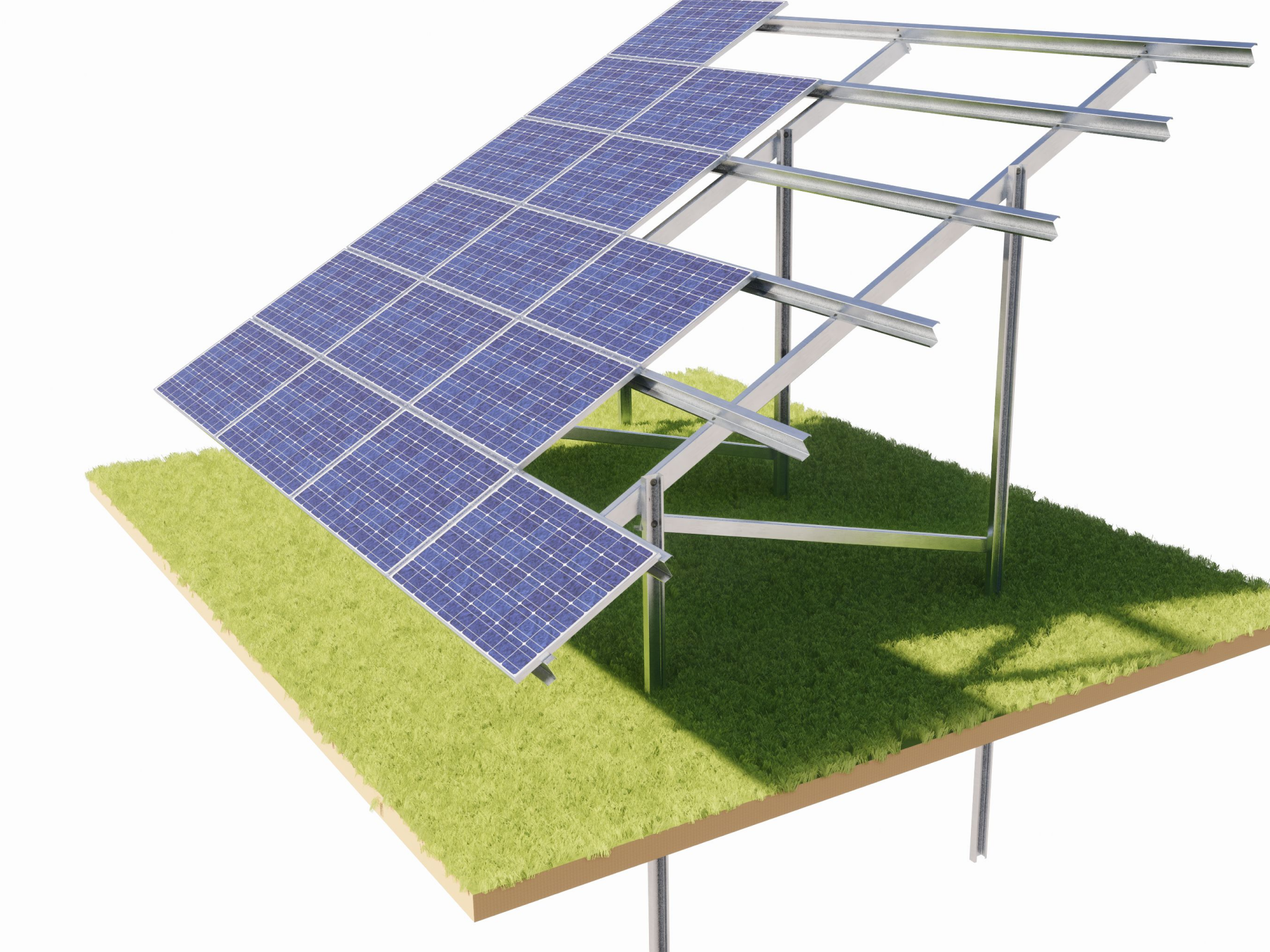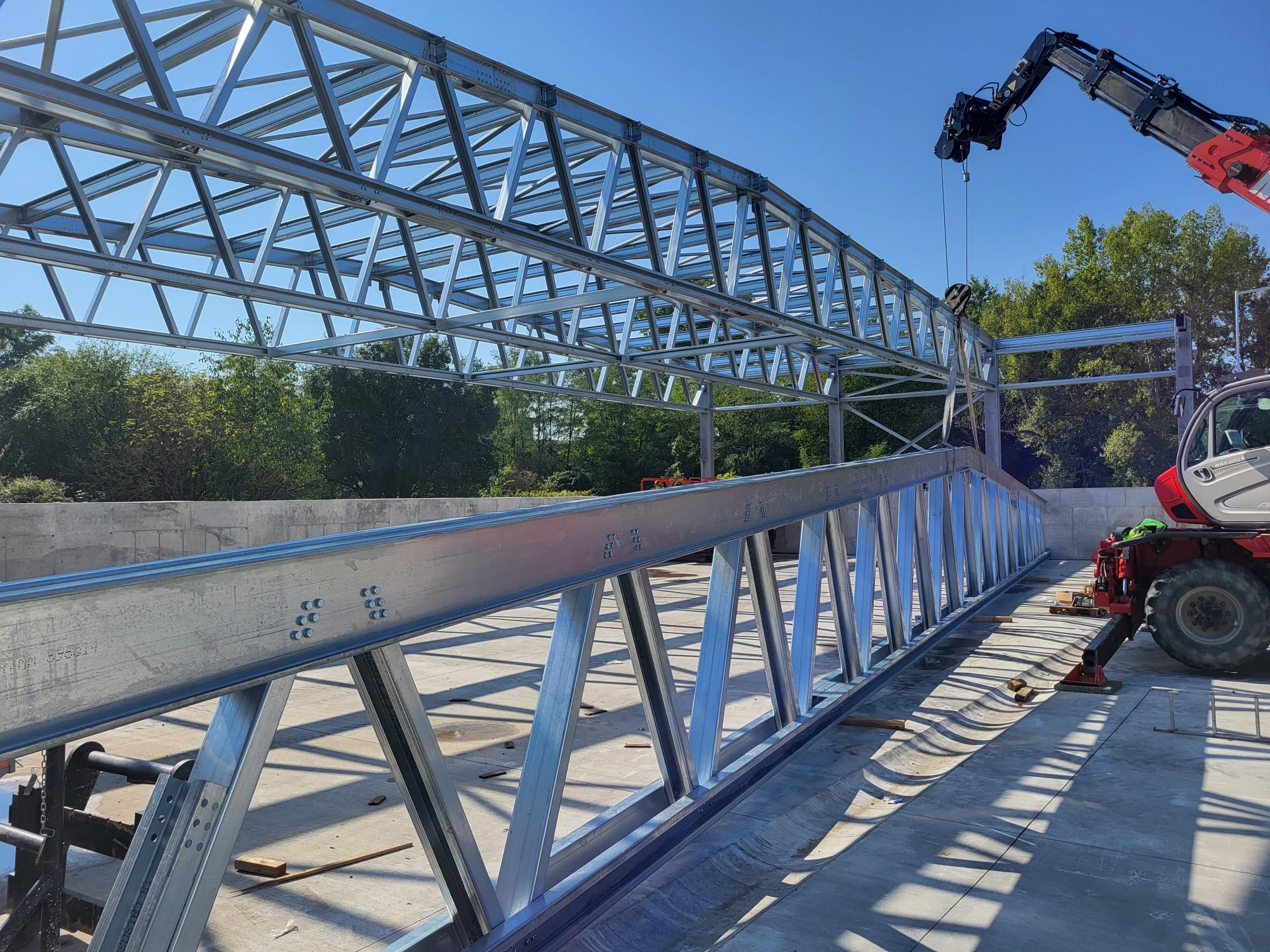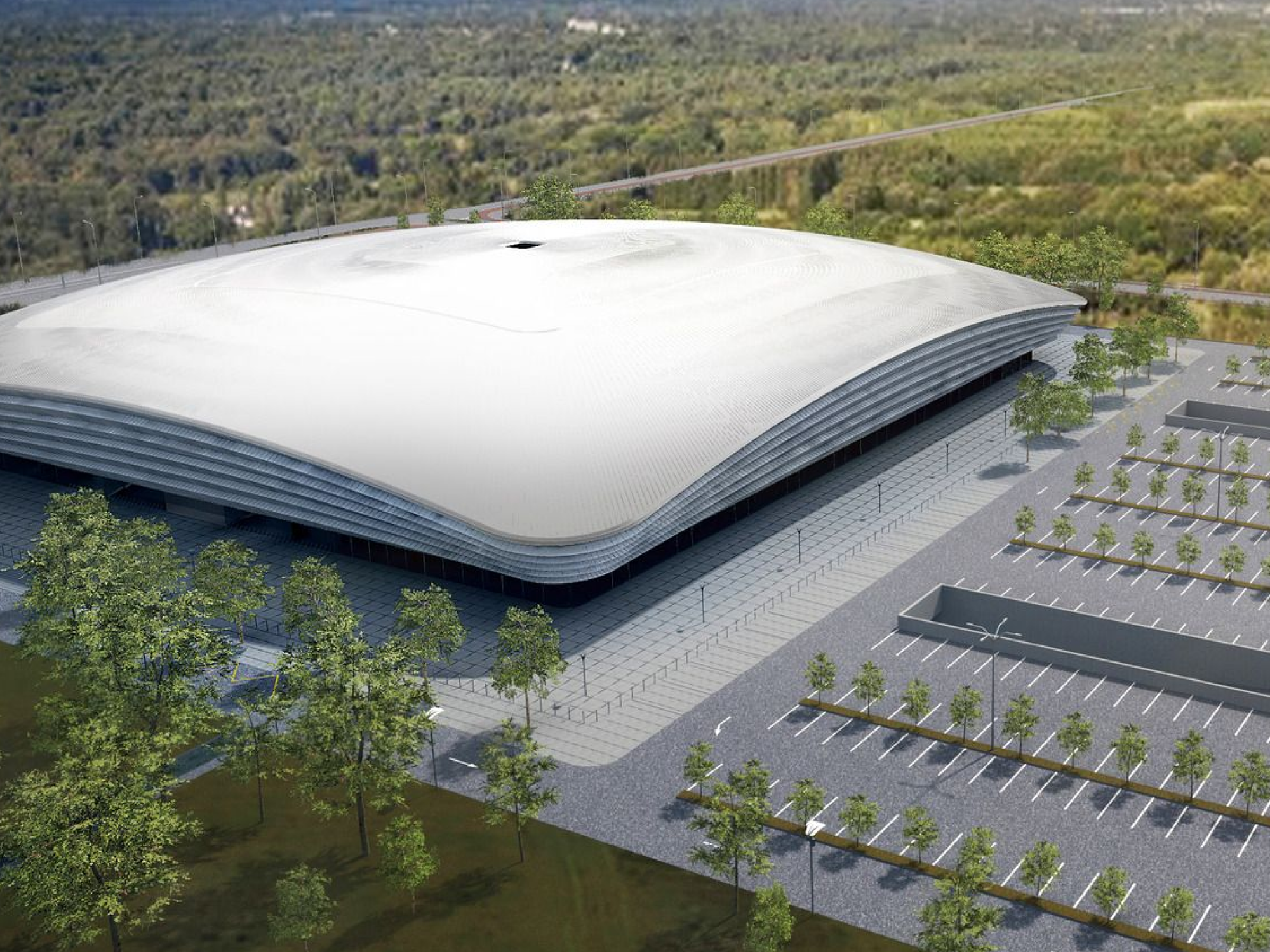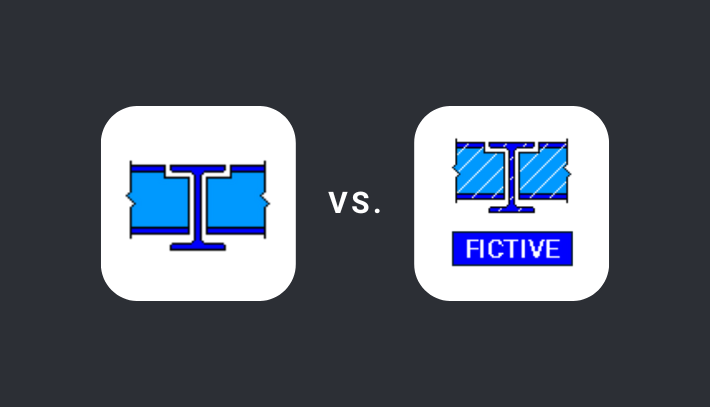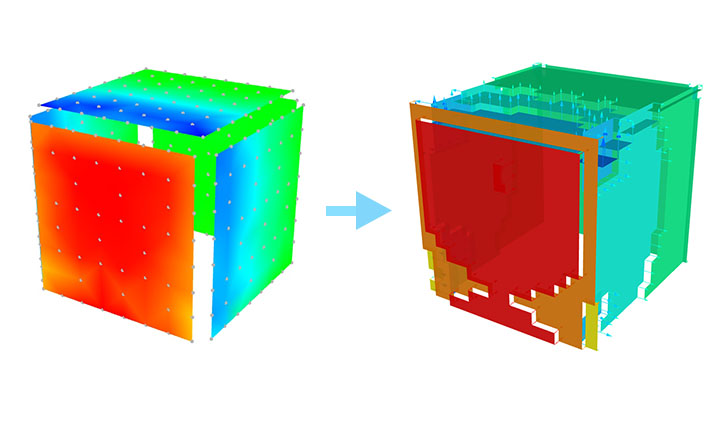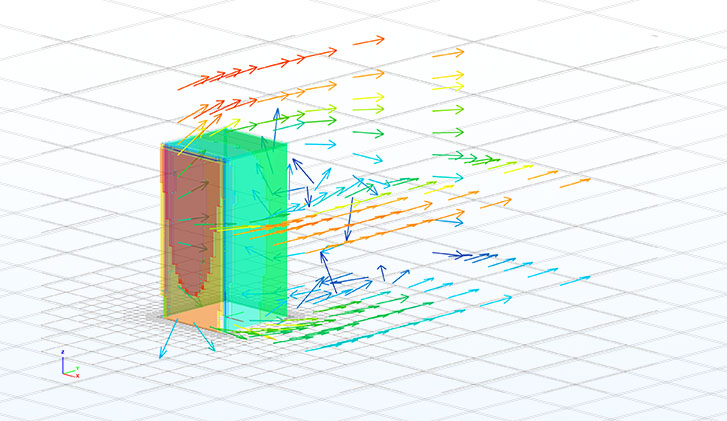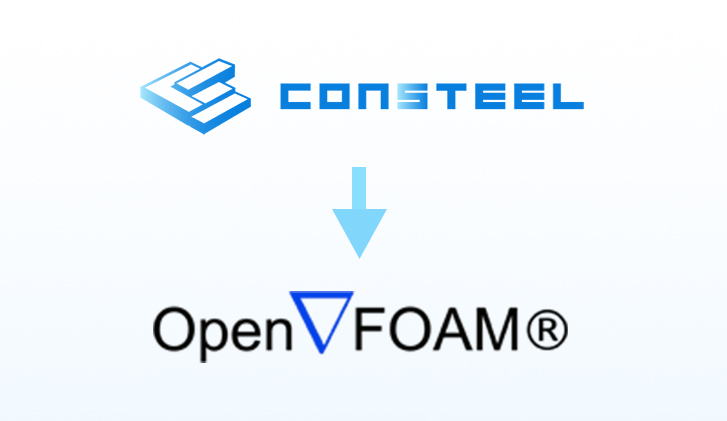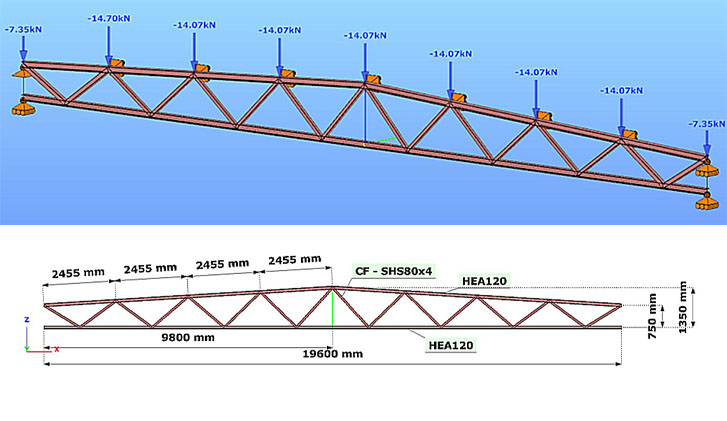Innovative Bemessung für optimierte, gute Tragwerke
Consteel bietet Ihnen das Wissen und die Werkzeuge, um Grenzen zu überschreiten und Ihre Tragwerksplanung auf ein neues Niveau zu heben.
Keine Kreditkarte erforderlich.
Bemessungsfunktionen
Kritische Temperaturberechnung
Der Brandbemessungsprozess ist ein integrierter Bestandteil des automatisierten und effizienten Bemessungsprozesses von Consteel. Je nach der gewählten Brandschutzlösung kann die Struktur ungeschützt oder geschützt sein. Im letzteren Fall kann der Brandschutz passiv (Isolierung) oder reaktiv (intumeszierende Beschichtung) sein. Die Berechnung kann mit Materialeigenschaften bei erhöhter oder Raumtemperatur durchgeführt werden. Bei der Analyse bei erhöhter Temperatur können auch die indirekten Auswirkungen der Wärmeausdehnung separat berücksichtigt werden. Für reaktive Schutzmaßnahmen werden die kritischen Temperaturen für jedes Stahlbauteil berechnet.
Pfettenberechnung
Die Pfettenberechnung ist stets mit vielen Fragen verbunden. Consteel bietet eine umfassende Lösung mit dem speziellen Pfettenberechnungsmodus: Berücksichtigung der Stützwirkung der Dachpaneele, der Überlappungen sowie einer vollständigen, Eurocode-konformen Berechnung des lokalen und verzerrungstechnischen Knickens. Da Pfetten als integrierte Bestandteile des globalen Strukturmodells modelliert werden können, können sowohl die unterschiedlichen Steifigkeiten ihrer Stützelemente (die Rahmen) untersucht werden als auch die Stabilisierungseffekte der Pfetten auf die Rahmen.
Automatische Knickbemessung basierend auf der Allgemeinen Methode
Die Allgemeine Methode ist der intelligenteste Ansatz für die Stabilitätsbemessung, wie sie in DIN EN 1993-1-1 beschrieben ist. Sie ist für komplexe Fälle von Knickproblemen außerhalb der Ebene (Biegung, Torsion, Biegedrillknick und deren Kombinationen) mit beliebigen Bauteilen, Lasten und Stützbedingungen anwendbar. Basierend auf der globalen Knickanalyse und Analyse der Stabilitätsgefährdung bietet sie eine umfassende und automatische Lösung für die Stabilitätsbemessung.
Bemessung der lokalen Knickung und der Verzerrungsknickung für parametrische kaltgeformte Profile
In Consteel können zahlreiche verschiedene kaltgeformte Profile parametrisch definiert werden, einschließlich Z-, C-, U-, Sigma-, Zeta- und Hutprofile mit Variationen von Kanten-, Flansch- und Stegverstärkungen. Eine vollständige Bemessungsberechnung wird für alle diese Profile unter Berücksichtigung der lokalen Knickung gemäß DIN EN 1993-1-5 und der Verzerrungsknickung gemäß DIN EN 1993-1-3 sowie der Interaktionen dieser Knickarten vollautomatisch durchgeführt.
Bemessung für benutzerdefinierte kaltgeformte Profile
Neben mehreren parametrisch definierten kaltgeformten Profilen können auch benutzerdefinierte Profile in Consteel erstellt werden. Die Profildefinition umfasst nicht nur die Zeichnungsgeometrie, sondern auch die Festlegung von Eurocode-Bemessungsparametern. Daher wird eine vollständige Bemessungsberechnung für benutzerdefinierte kaltgeformte Profile unter Berücksichtigung der lokalen Knickung gemäß DIN EN 1993-1-5 und der Verzerrungsknickung gemäß DIN EN 1993-1-3 sowie der Interaktionen dieser Knickarten vollautomatisch durchgeführt.
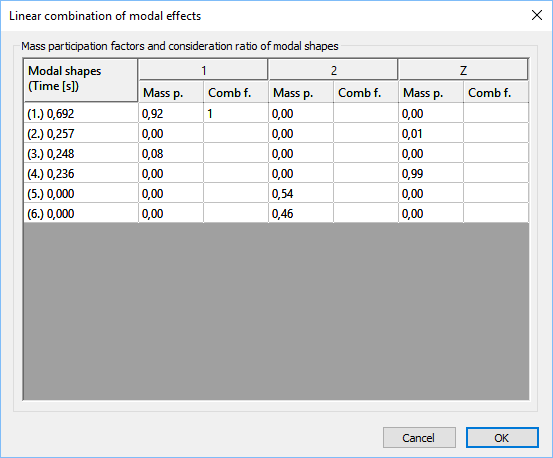
Seismische Bemessung durch benutzerdefinierte multimodale Analyse
Im Falle einer klassischen Modalanalyse ist es ein häufiges Problem, dass die Massenbeteiligung nicht hoch genug ist, weil es nicht nur einen dominanten Modus gibt, sondern 2 oder 3 Modi mit signifikanten Beiträgen. In Consteel ist es möglich, die relevanten Modi manuell zu kombinieren und die Analyse mit den daraus resultierenden Lasten durchzuführen. Die erzeugten Lasten können in einer mechanisch konsistenten Weise kombiniert werden, im Gegensatz zu den Lasten, die mit der CQC-Methode kombiniert werden, bei denen die Vorzeichen/Richtungen der Lasten verloren gehen und daher die Ergebnisse nur auf Querschnittsebene, jedoch nicht auf Bauteilebene konsistent sind. Diese Konsistenz ist von großer Bedeutung bei der Knickanalyse und der Anschlussbemessung.
Normen
In Consteel sind zahlreiche nationale Anhänge für die Eurocode-basierte Bemessung verfügbar: Ungarisch, Niederländisch, Finnisch, Singapurisch, Portugiesisch, Schwedisch, Österreichisch, Polnisch, Deutsch, Bulgarisch, Griechisch, Zypriotisch, Britisch, Kroatisch, Französisch, Dänisch. Auch rumänische, spanische und italienische nationale Normen sowie AISC 360 sind verfügbar.
Wie kann Consteel Ihre Arbeit verbessern?
SIMPLIFY YOUR DESIGN PROCESS


